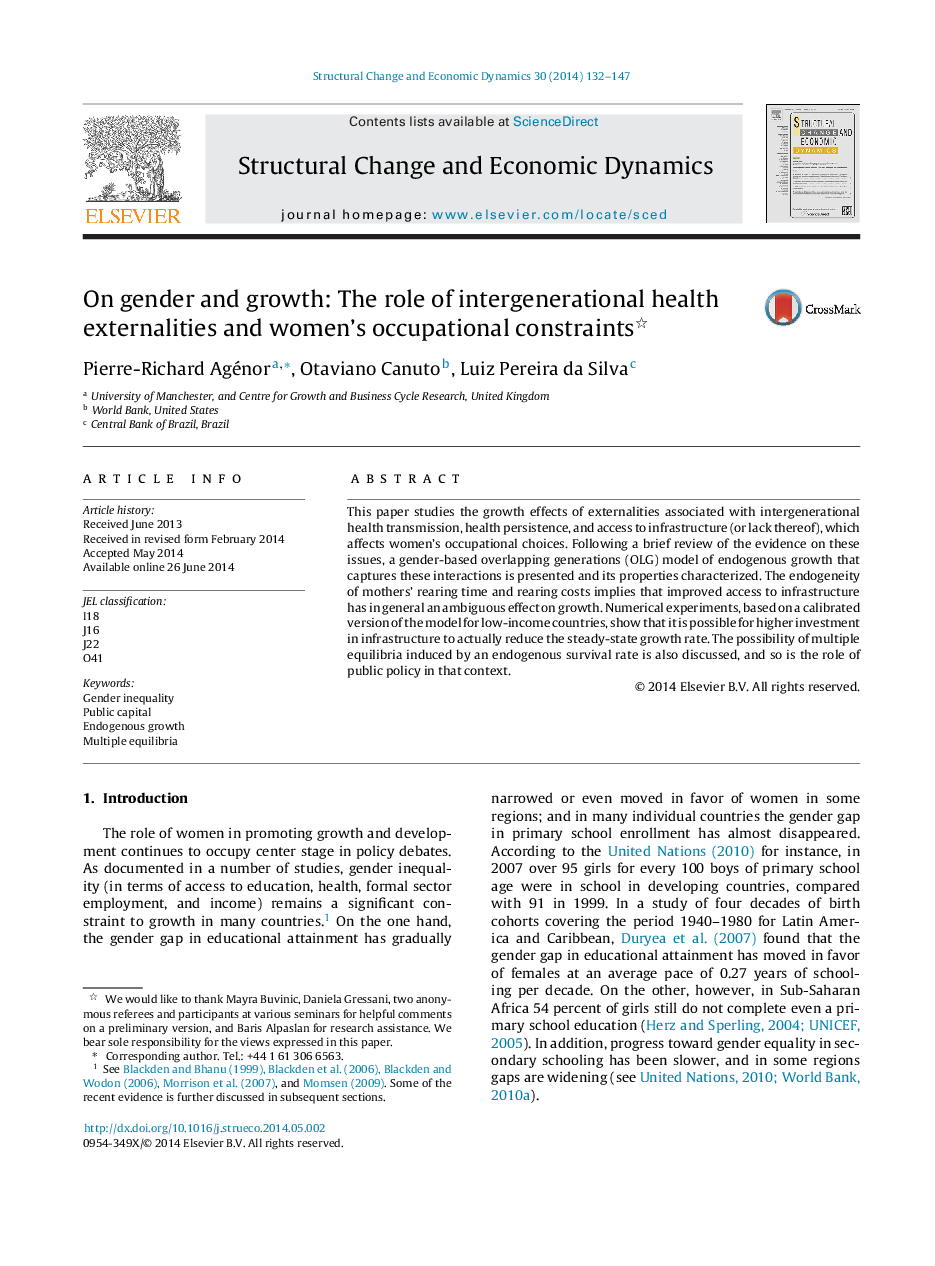| Article ID | Journal | Published Year | Pages | File Type |
|---|---|---|---|---|
| 988548 | Structural Change and Economic Dynamics | 2014 | 16 Pages |
•Growth effects of health externalities and infrastructure in gender-based OLG model.•Women's time allocation is endogenous.•Infrastructure investment may not promote growth if women's rearing time falls.•Endogenous life expectancy may lead to multiple equilibria.•Public policy may put the economy on a convergence path to the stable equilibrium.
This paper studies the growth effects of externalities associated with intergenerational health transmission, health persistence, and access to infrastructure (or lack thereof), which affects women's occupational choices. Following a brief review of the evidence on these issues, a gender-based overlapping generations (OLG) model of endogenous growth that captures these interactions is presented and its properties characterized. The endogeneity of mothers’ rearing time and rearing costs implies that improved access to infrastructure has in general an ambiguous effect on growth. Numerical experiments, based on a calibrated version of the model for low-income countries, show that it is possible for higher investment in infrastructure to actually reduce the steady-state growth rate. The possibility of multiple equilibria induced by an endogenous survival rate is also discussed, and so is the role of public policy in that context.
